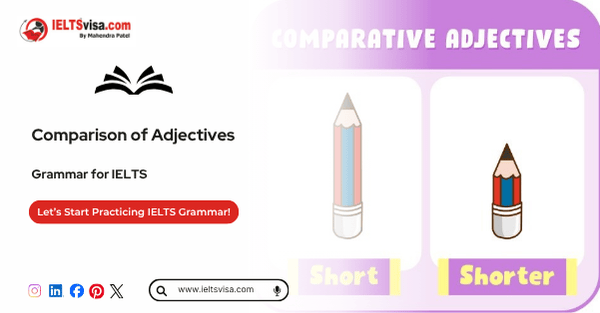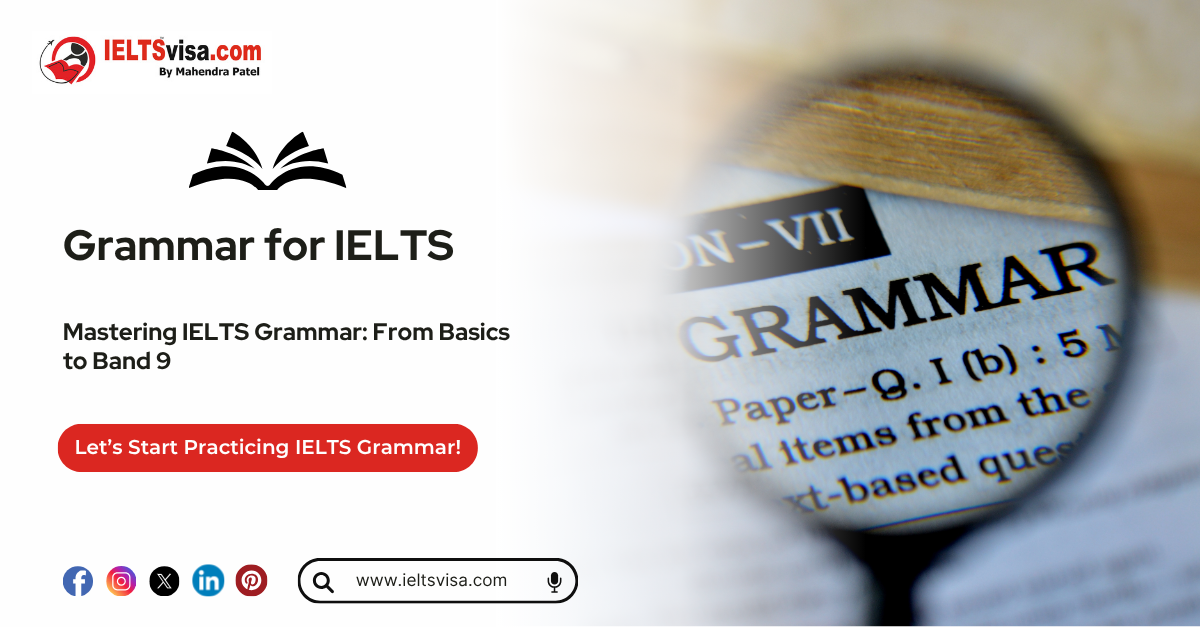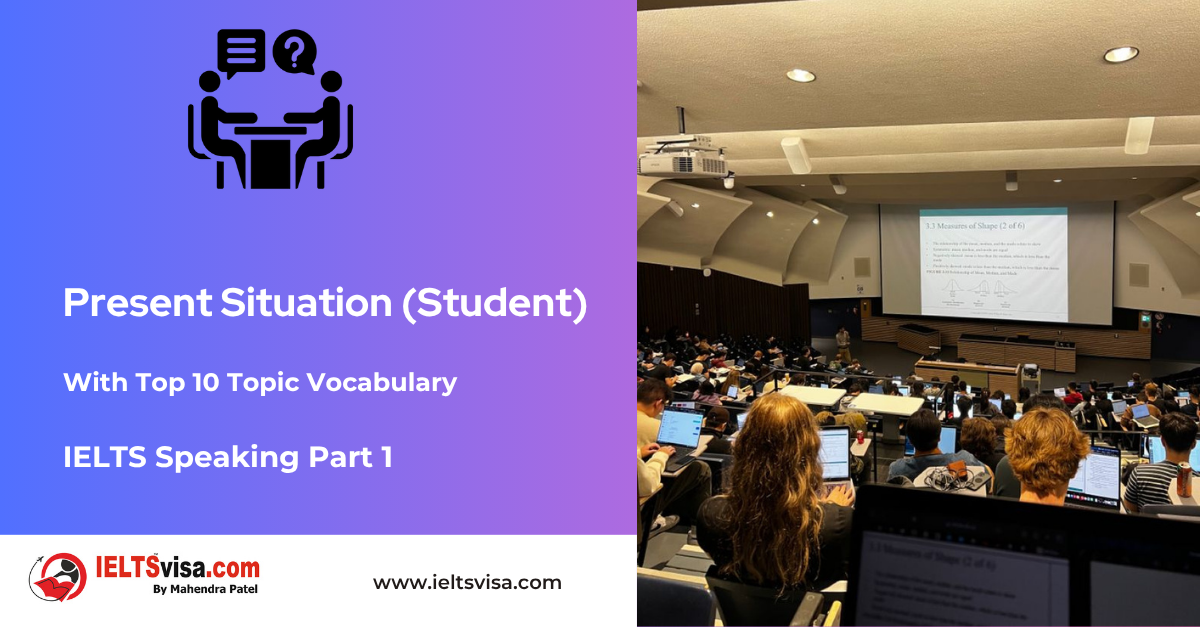Mood in English Grammar
Grammar for IELTS

Mood in English Grammar
The concept of “mood” in English grammar is essential for understanding how sentences convey different intentions or attitudes of the speaker. Whether you’re stating a fact, giving a command, asking a question, or expressing a wish, the mood of the verb changes to reflect the purpose of the sentence. This guide will help you understand the meaning, types, and usage of moods in English with simple examples.
Mood in grammar refers to the form of a verb that shows the speaker’s intention or attitude. It helps us understand whether the sentence expresses a statement, command, question, wish, or condition. Definitions:What Is Mood in English Grammar?
-
- According to the Oxford Learner’s Dictionary, mood is “one of the categories of verb use that expresses facts, orders, questions, wishes, or conditions.”
- The Cambridge Dictionary defines mood as “the forms of verbs used to show whether the person speaking intends to express a fact, an order, or a hope.”
English grammar features five main types of moods:Types of Moods in English Grammar
1. Indicative Mood
2. Imperative Mood
3. Subjunctive Mood
4. Interrogative Mood
5. Conditional Mood
Let’s explore each type in detail with examples.The indicative mood is the most common mood in the English language. It is used to express facts, opinions, or general statements. Sentences in the indicative mood can be positive or negative. Examples:1. Indicative Mood
1. “The sun rises in the east.” (Fact)
2. “I love chocolate ice cream.” (Opinion)
3. “We visited the park yesterday.” (Statement about the past)
4. “It is not raining right now.” (Negative statement)
Usage:-
- To state facts: “Water boils at 100°C.”
- To describe actions: “She writes every day.”
- To express beliefs or opinions: “I think this is the best option.”
2. Imperative Mood
The imperative mood is used to give commands, requests, or instructions. These sentences often exclude the subject, as the command is directed at the listener.
Examples:
1. “Close the door.” (Command)
2. “Please help me with this task.” (Request)
3. “Do not touch the glass.” (Negative command)
Usage:
-
- To give orders: “Stand in line.”
- To make polite requests, use phrases like “Bring me a glass of water, please.”
- To provide instructions: “Mix the ingredients carefully.”
3. Subjunctive Mood
The subjunctive mood is used to express wishes, suggestions, hypothetical situations, or actions that are contrary to fact. It often appears in formal or literary contexts.
Examples:
1. “I wish I were taller.” (Wish)
2. “If I were you, I would accept the offer.” (Hypothetical)
3. “The teacher demanded that he be on time.” (Suggestion)
Usage:
-
- To express wishes: “I wish it were summer.”
- To describe hypothetical situations: “If she were here, we would start the meeting.”
- To make suggestions: “It is important that she attend the meeting.”
The interrogative mood is used to ask questions. These sentences typically begin with question words (who, what, where, when, why, how) or auxiliary verbs (is, do, can, etc.). Examples:4. Interrogative Mood
1. “Are you coming to the party?”
2. “What is your favourite colour?”
3. “When will the movie start?”
Usage:-
- To seek information: “Where are you going?”
- To confirm details: “Did you complete the assignment?”
- To clarify doubts: “How does this work?”
5. Conditional Mood
The conditional mood is used to express actions or outcomes that depend on a specific condition. It often involves modal verbs like “would,” “could,” or “might.”
Examples:
1. “If you study, you will pass the exam.” (First conditional)
2. “If I had known, I would have helped you.” (Third conditional)
3. “She might come if you invite her.” (Uncertain outcome)
Usage:
-
- To describe possible outcomes: “If it rains, we will stay indoors.”
- To express hypothetical scenarios: “If I were rich, I would travel the world.”
- To make polite offers: “I could help you if you need it.”
Comparison of Moods
|
Mood |
Function |
Example |
|
Indicative |
Expresses facts, statements, or opinions |
“The sky is blue.” |
|
Imperative |
Gives commands or requests |
“Do your homework.” |
|
Subjunctive |
Expresses wishes, hypothetical situations, or formal suggestions |
“I wish it were easier.” |
|
Interrogative |
Asks questions |
“Why are you late?” |
|
Conditional |
Indicates outcomes dependent on conditions |
“If it rains, we will cancel the trip.” |
Practice Exercise: Identify the Mood
Determine the mood of the verbs in the following sentences:
1. “Finish your homework now.”
2. “If I had more time, I would read that book.”
3. “What are you doing this weekend?”
4. “She believes in hard work.”
5. “I suggest that he take the earlier train.”
Answers:
1. Imperative
2. Conditional
3. Interrogative
4. Indicative
5. Subjunctive
Tips for Understanding Mood in Grammar
1. Identify the Purpose: Ask yourself what the sentence is trying to convey – a fact, command, wish, or condition.
2. Look for Clues: Words like “if,” “wish,” or modal verbs can indicate subjunctive or conditional moods.
3. Practice Regularly: Write and analyze sentences to understand how moods are used.
4. Learn Common Structures: Familiarize yourself with sentence patterns associated with each mood.

Our Books
Master IELTS Speaking Part 1
IELTS Writing Task 1 Book
IELTS Writing Task 2 Book
Practice IELTS Other Modules
IELTS Listening
The IELTS Listening test assesses how well you can understand spoken English in various contexts. It lasts about 30 minutes and is divided into four sections with a total of 40 questions. The listening tasks become increasingly difficult as the test progresses.
IELTS Academic Reading
The IELTS Academic Reading section assesses your ability to understand and interpret a variety of texts in academic settings. It is designed to evaluate a range of reading skills, including skimming for gist, reading for main ideas, reading for detail, understanding inferences, and recognizing a writer's opinions and arguments.
IELTS Speaking
The IELTS Speaking test assesses your ability to communicate in English on everyday topics. It lasts 11-14 minutes and consists of three parts: introduction, cue card, and a discussion based on the cue card topic.
IELTS General Reading
IELTS General Reading tests your ability to understand and interpret various types of texts. Here are some key areas and types of content you can expect to encounter in the reading section, along with tips for effective preparation.
IELTS Academic Writing Task 1
In IELTS Academic Writing Task 1, you are presented with a visual representation of information, such as graphs, charts, tables, or diagrams, and you are required to summarize, compare, or explain the data in your own words.
IELTS General Writing Task 1
In IELTS General Writing Task 1, you are required to write a letter based on a given situation. The letter can be formal, semi-formal, or informal, depending on the prompt. Here’s a breakdown of the key components to include in your letter
IELTS Academic Writing Task 2
In IELTS Academic Writing Task 2, you are required to write an essay in response to a question or topic. Here’s a guide to help you understand the essential elements of this task
IELTS Exam Tips
To succeed in the IELTS exam, practice regularly, familiarize yourself with the test format, improve your vocabulary, develop time management skills, and take mock tests to build confidence.
Grammer for IELTS
Grammar is the foundation of effective communication in English. Understanding tense usage, subject-verb agreement, and sentence structure enhances clarity and coherence in writing and speaking.
Vocabulary for IELTS
Vocabulary plays a crucial role in the IELTS (International English Language Testing System) exam, especially in the Speaking and Writing sections. Here’s an overview of why vocabulary is important and how it impacts your performance
RECENT IELTS SAMPLES QUESTIONS AND ANSWERS
IELTS Speaking Part 1 – Favourite Sujbect – Physics
IELTS Speaking Part 1 - Favourite Sujbect - Physics Q: What is your favourite subject? A: My favourite subject...
IELTS Speaking Part 1 – Present Situation (Student)
IELTS Speaking Part 1 - Present Situation (Student) Q1: Are you a student or do you work?A: I’m a full-time...
IELTS Speaking Part 1 – Present Situation – Employee – as an International Student and Social Worker
IELTS Speaking Part 1 - Present Situation - Employee - as an International Student and Social Worker Q1: Are...
IELTS Speaking Part 1 – Persent Situation – Employee- as an Electric Engineer
IELTS Speaking Part 1 - Persent Situation - Employee- as an Electric Engineer Q1: What do you do for a...
IELTS Speaking Part 1 – Persent Situation – Employee – as an Software Engineer
IELTS Speaking Part 1 - Persent Situation - Employee - as an Software Engineer Q1: What do you do for a...
IELTS Speaking Part 1 – Persent Situation – Married
IELTS Speaking Part 1 - Persent Situation - Married Q1: Are you married?A: Yes, I am married. My spouse and I...













